Brief

Financial services marketers have observed the rapid changes in consumers’ behavior throughout the coronavirus pandemic, because of the health effects, social distancing and physical branch closures. Account openings and service have accelerated online. For branches that remain open, contactless payment, electronic signatures and new safety protocols are on the rise. Work-at-home arrangements and home confinement made broadband more essential for many households, and prompted faster adoption of certain digital platforms. Advertising is migrating to more digital outlets (see Figure 1).
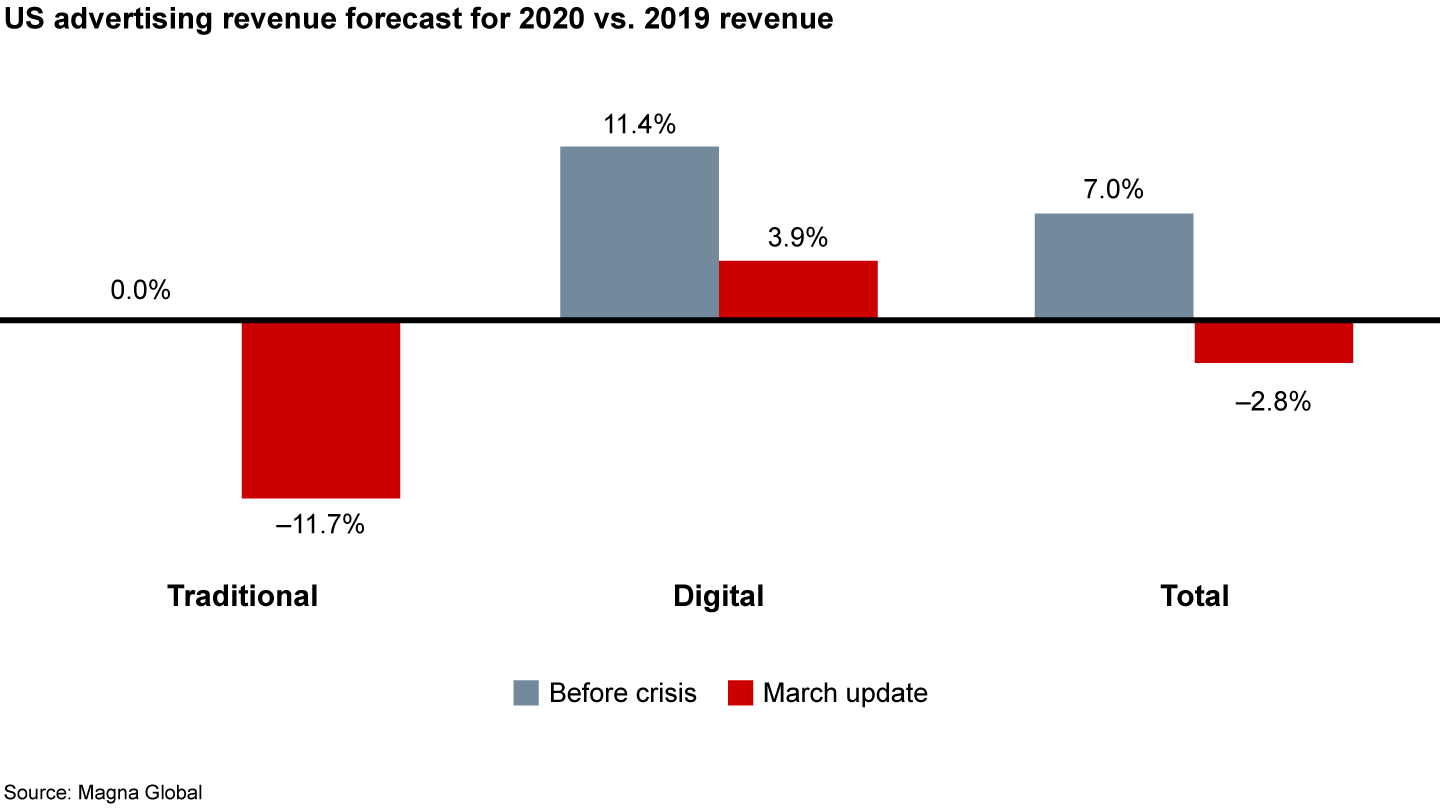
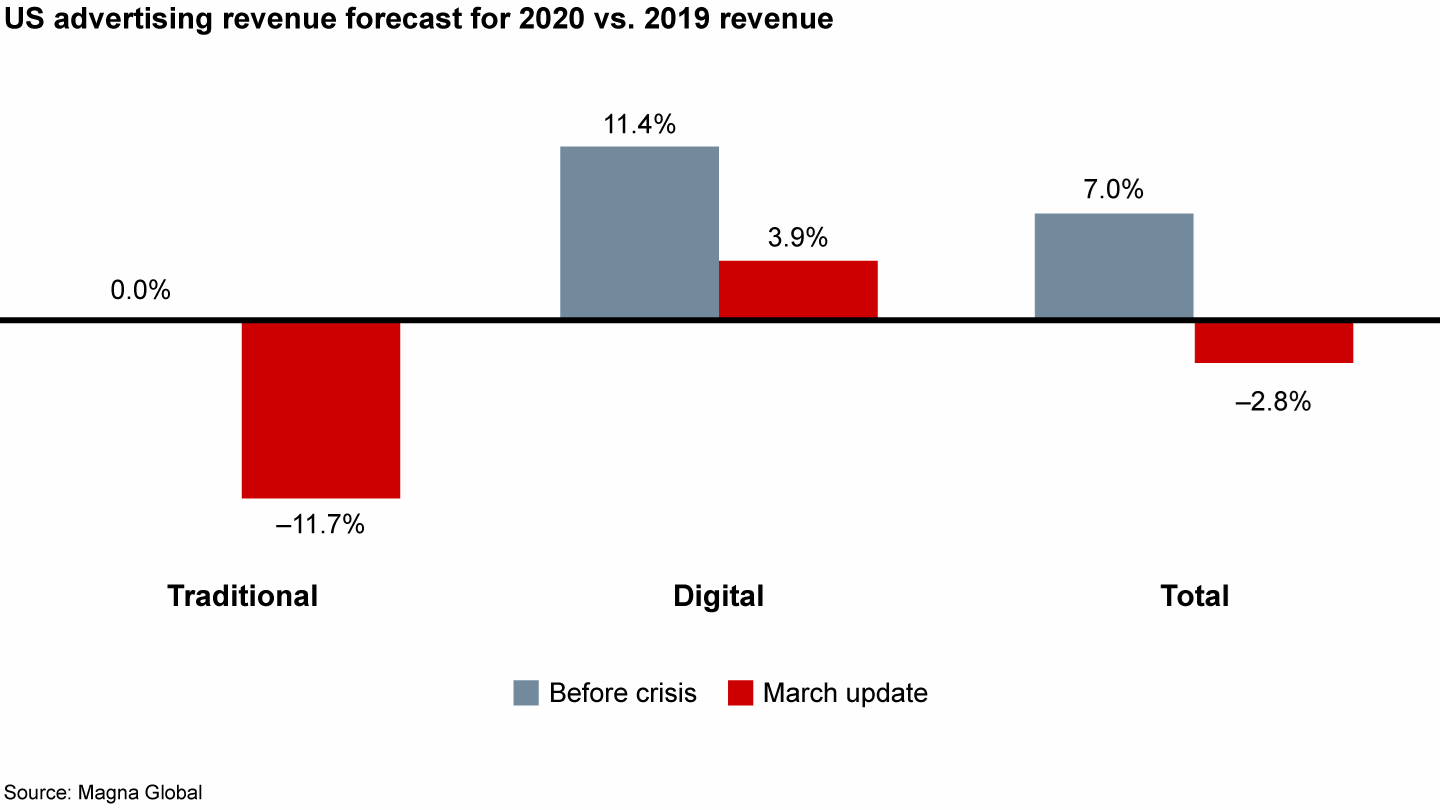
What’s uncertain is when consumers might become less concerned with reducing personal risk and more with other product features. Or whether marketers will be able to quickly shift gears to address the next modifications in consumers’ priorities.
Many marketing organizations have trouble making fast, high-quality decisions, because complexity has crept in over time. Traditional fixed budgets, annual calendars and large-scale campaigns cut against the grain of modern imperatives such as real-time, one-to-one marketing and continual in-market testing. Current operating models, in short, may not work in the world after Covid-19.

Macro Surveillance Platform
For more detail on the business implications of coronavirus from Bain’s Macro Trends Group, log on to the Macro Surveillance Platform. Learn more about the platform >
How can marketing organizations become faster and more nimble in their decision making? Bain & Company research and our work with marketing leaders suggest three hard questions that marketers must answer.
What stands in the way of moving faster?
Financial services organizations that require going up and down corporate structures to get approval, or try to make decisions by committee, won’t keep pace with consumers. Bain’s survey of more than 500 marketing executives in the US and Canada found that fully one-third of marketing laggards said that slow decision making is a key barrier holding back effective marketing, compared with only one-fifth of the marketing leaders (see Figure 2). We defined leaders as the top quintile for revenue and market-share growth, and laggards as the bottom quintile.
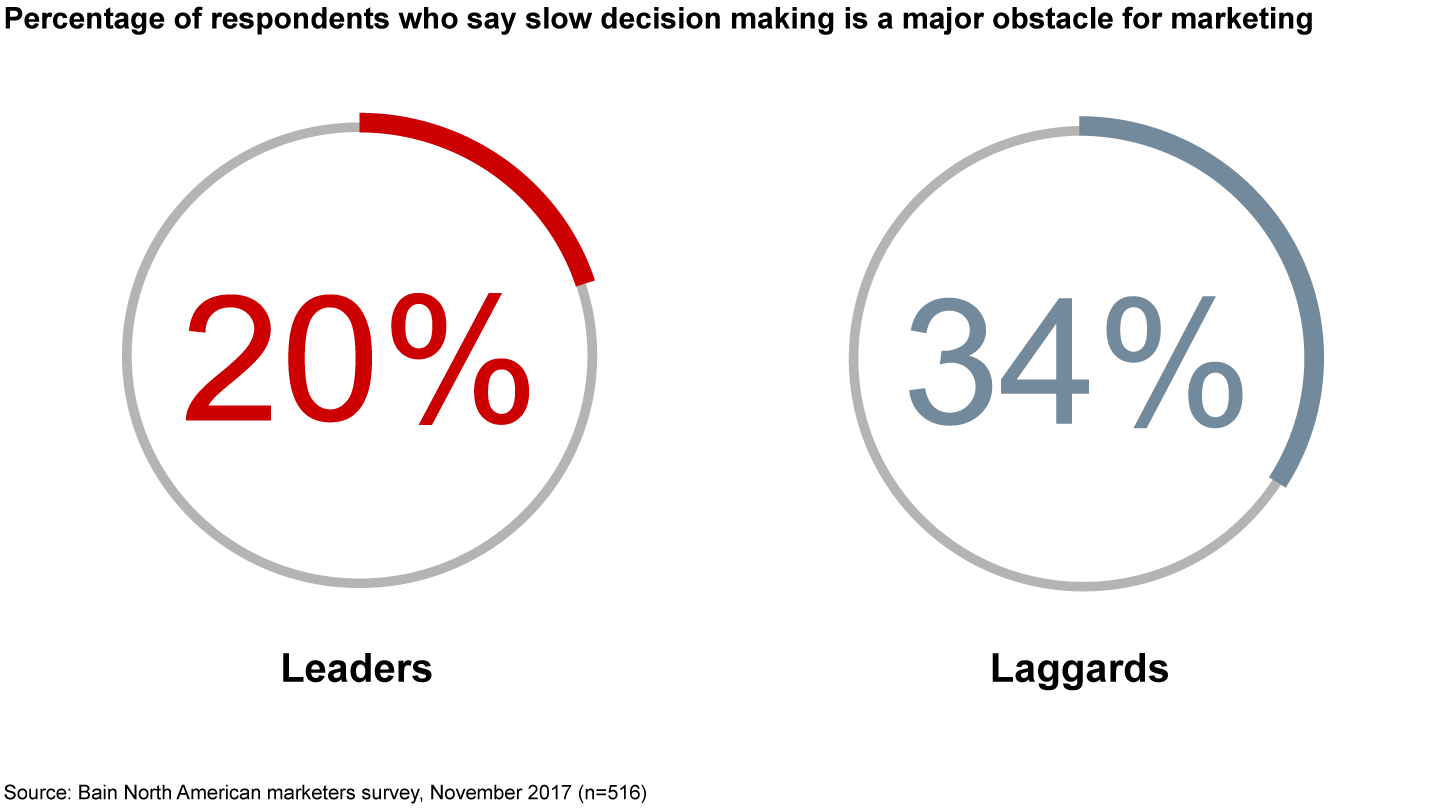
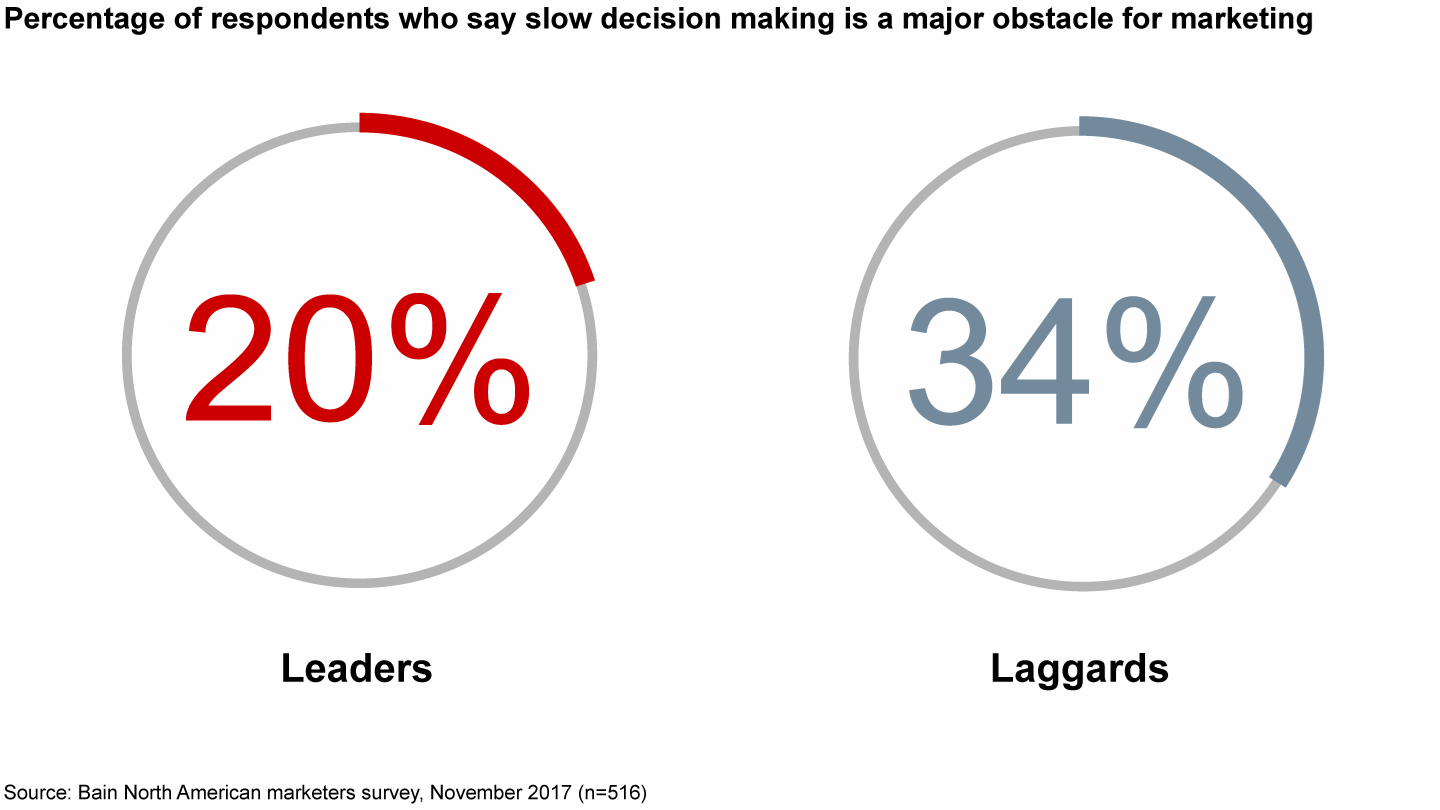
Do we test our assumptions enough?
One aspect of a leaner process involves setting up Agile teams composed of different disciplines, such as creative and media. Organizational silos can stifle innovation, so marketing leaders take care to build cross-functional teams and coordinate closely between teams (see Figure 3).
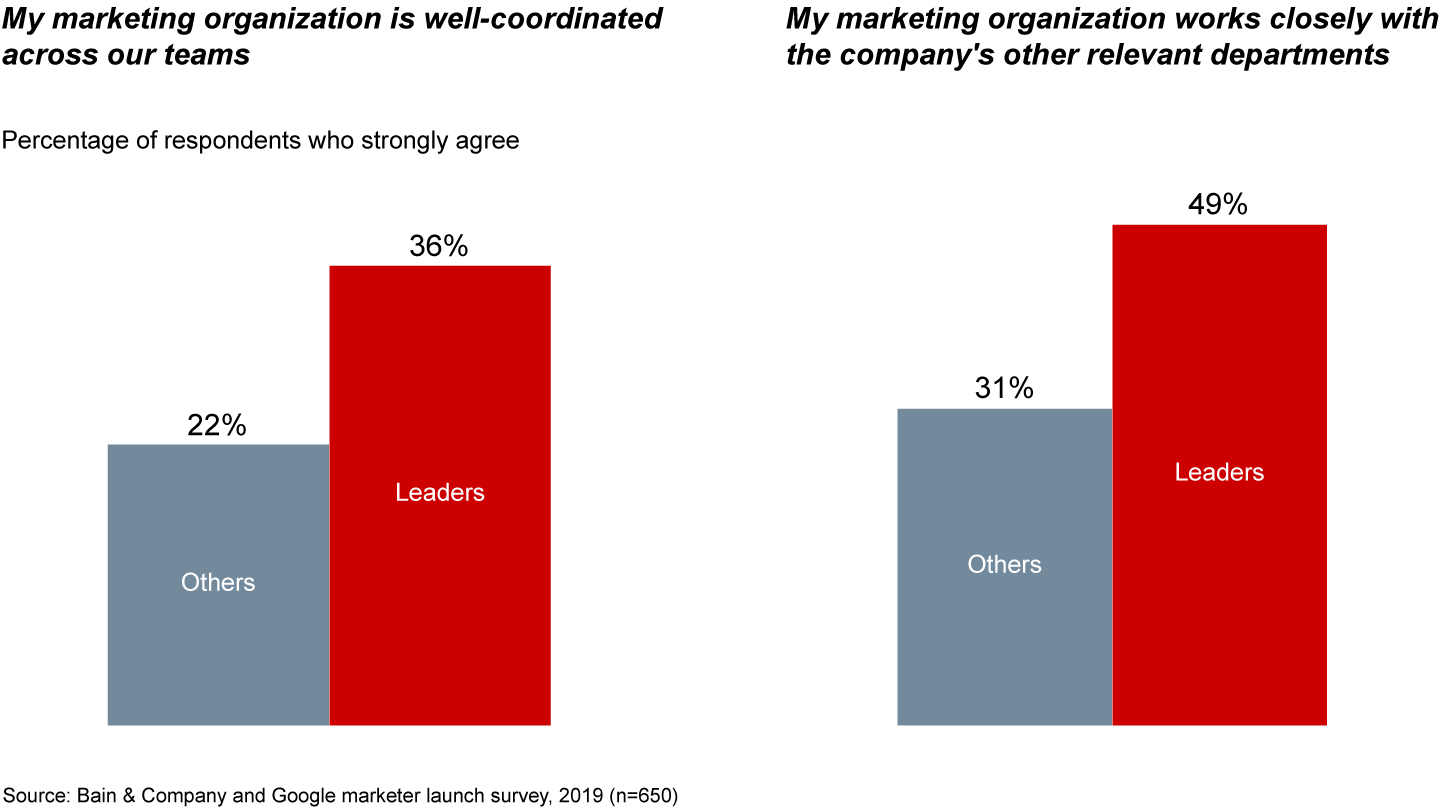
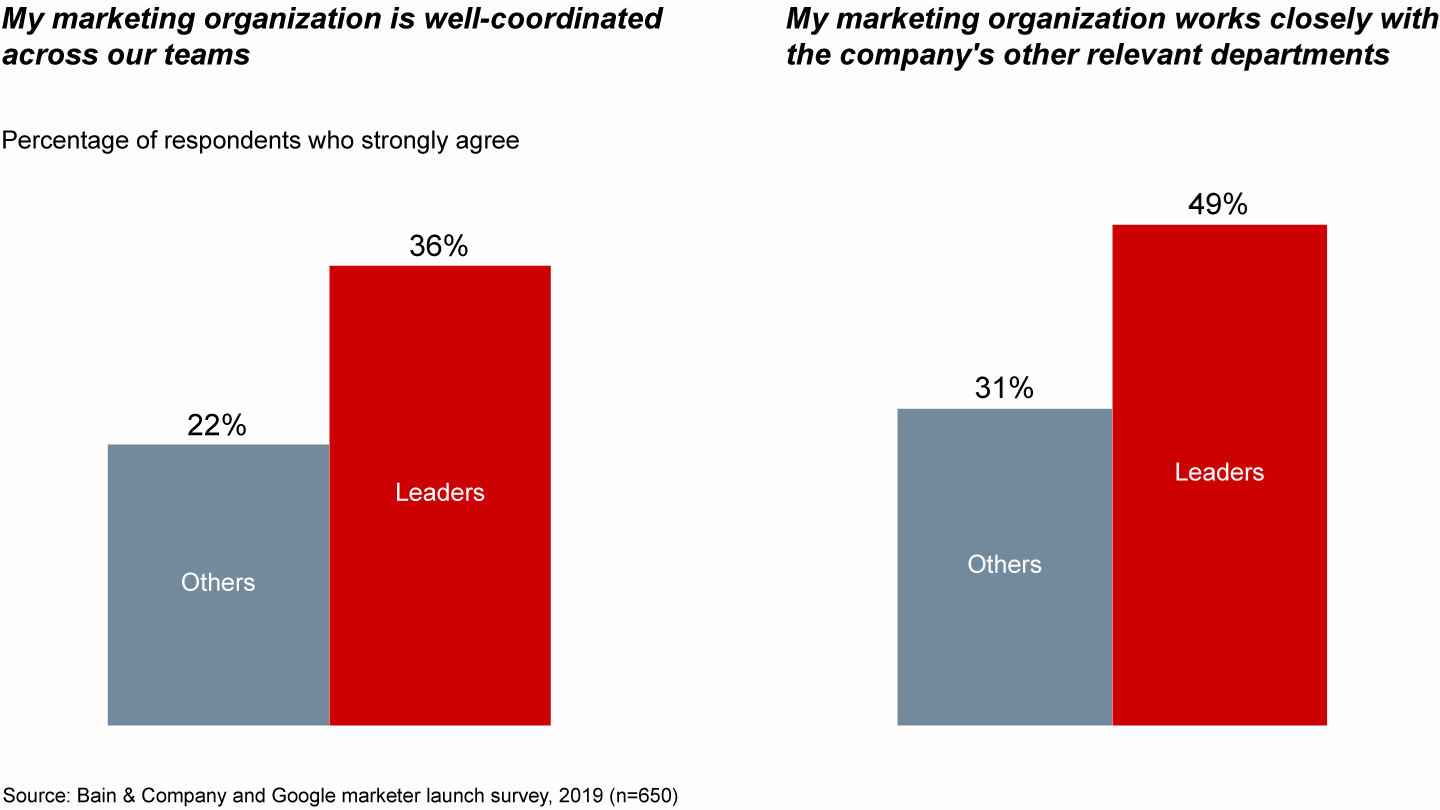
A Bain–Google survey found leaders’ teams are 2.8 times more likely than others to use Agile management methods, in which small, multidisciplinary teams break complex problems into simpler tasks, then create and test prototypes in short sprints (see Figure 4). Leaders ensure the message gets delivered in the right context at the right time. They also tend to conduct in-market tests more frequently, which helps the marketing organization learn how consumers behave and reach the desired business outcomes faster.
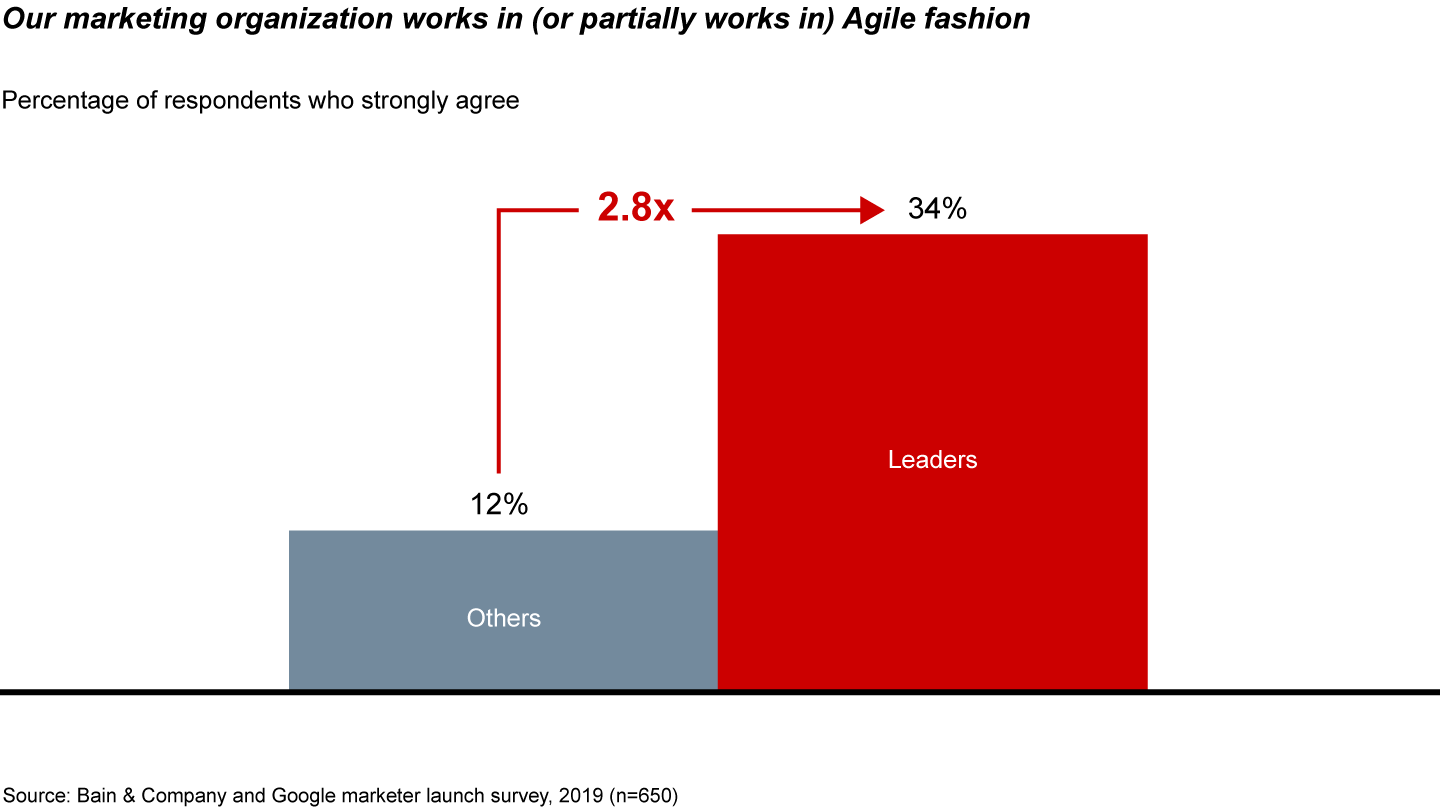
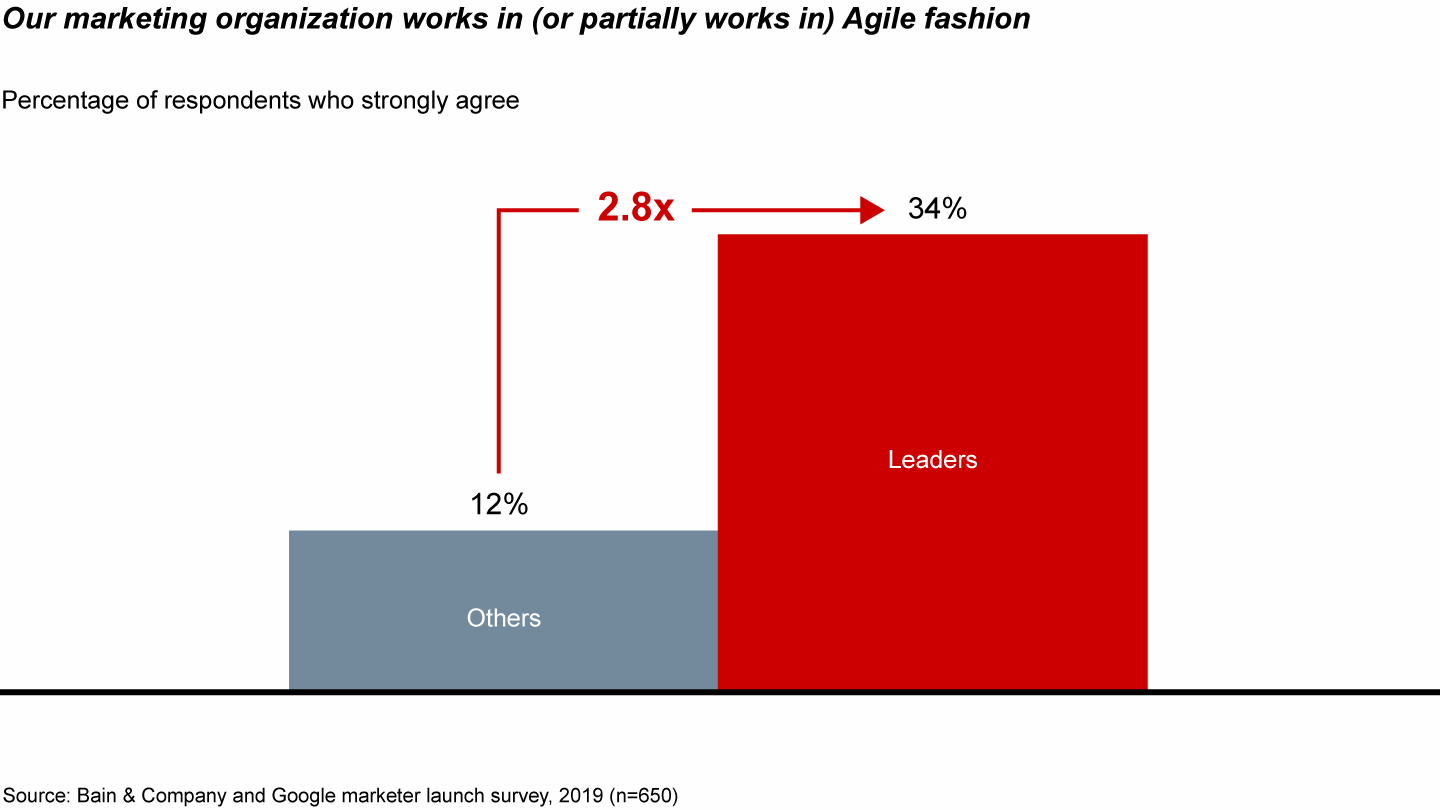
This test-and-learn discipline has become essential. With the drastic changes in consumer behavior underway, legacy marketing-mix models have become obsolete. Instead, testing allows firms to learn quickly about new habits of digital media consumption and new pricing dynamics. The financial services leaders thus are more than twice as likely to use a test-and-learn approach (see Figure 5).
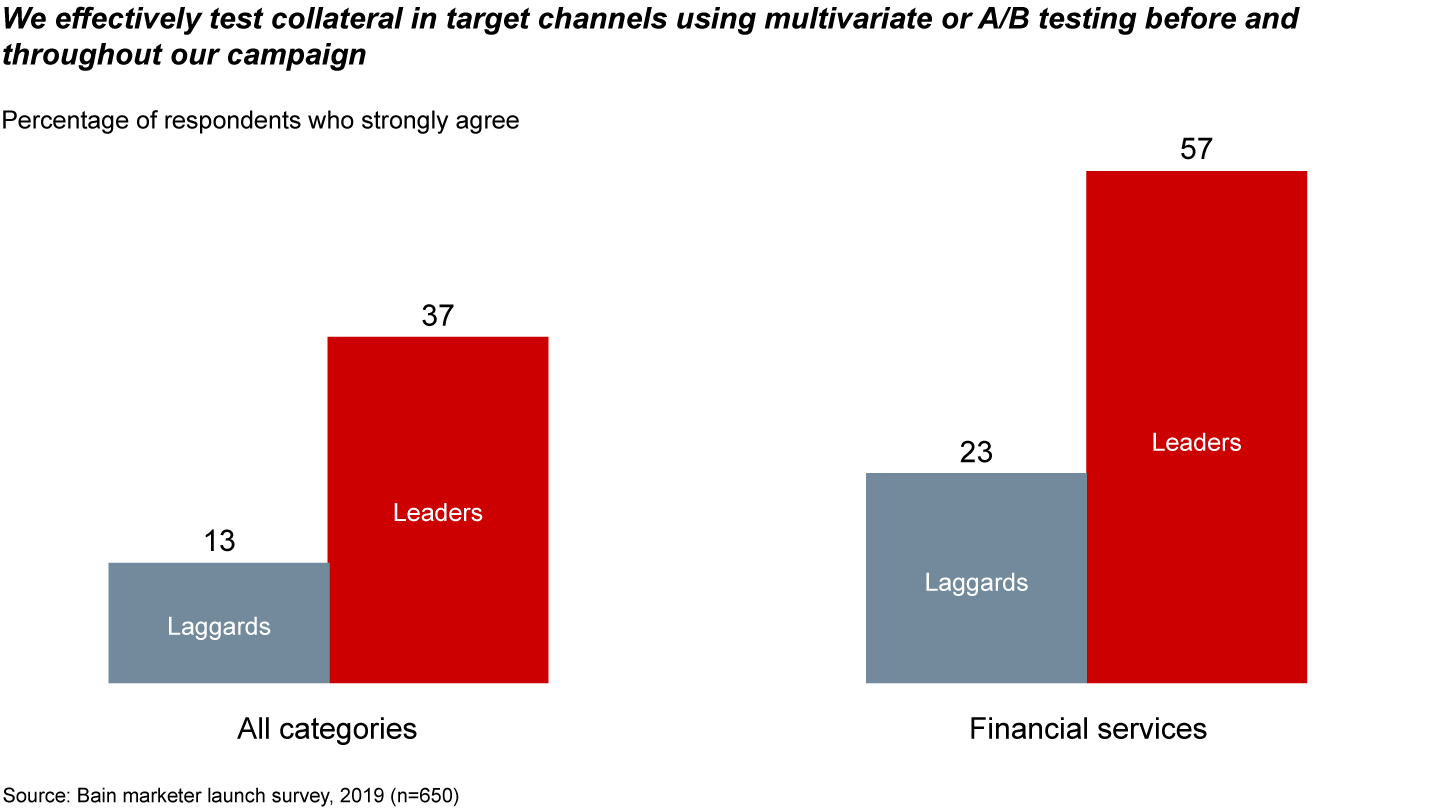

Do our partners make us stronger?
Agile teaming extends to agencies and other external partners. The company’s priorities should be their priorities, so any shift in focus should include them. They should work just as fast—maybe faster—to learn by testing different messages, moments and creative content with consumers.
Fast, high-quality decisions that involve partners require them to have clear roles and responsibilities. In a test-and-learn environment, agencies will need to create content in days, not months, and produce 100 campaigns each year, not 5 to 10. It’s also worth considering new incentive models, such as pay for performance rather than pay for exposure—which of course means close alignment on objectives.
Some companies may choose to bring more outsourced work in-house, in order to make faster connections between first-party data and new digital media campaigns. Whatever the mix of in-house and outsourced work, partners must be closely integrated into marketing processes. While marketing leaders keep many capabilities in-house, they’re also 1.6 times more likely than laggards to integrate vendors into their processes (see Figure 6).
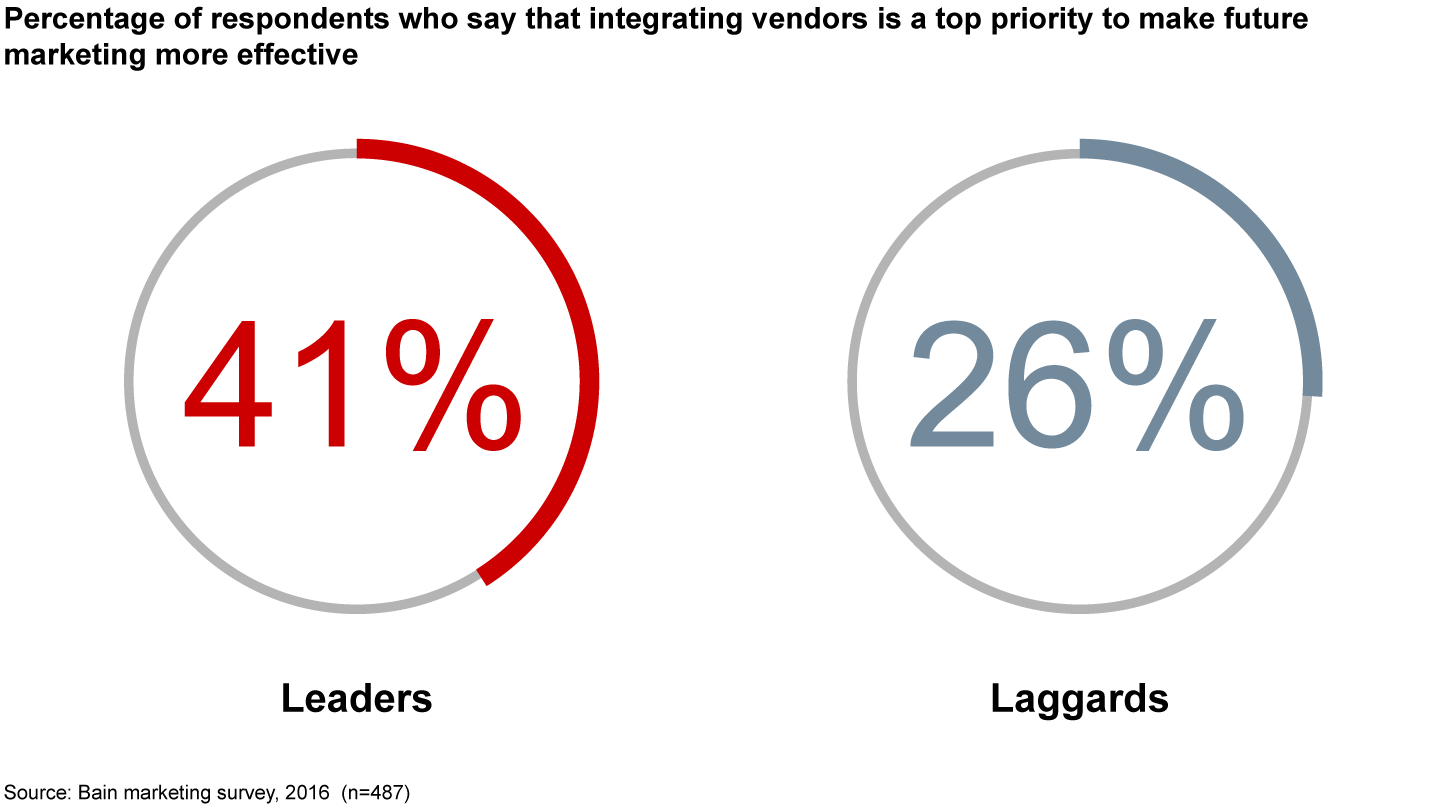
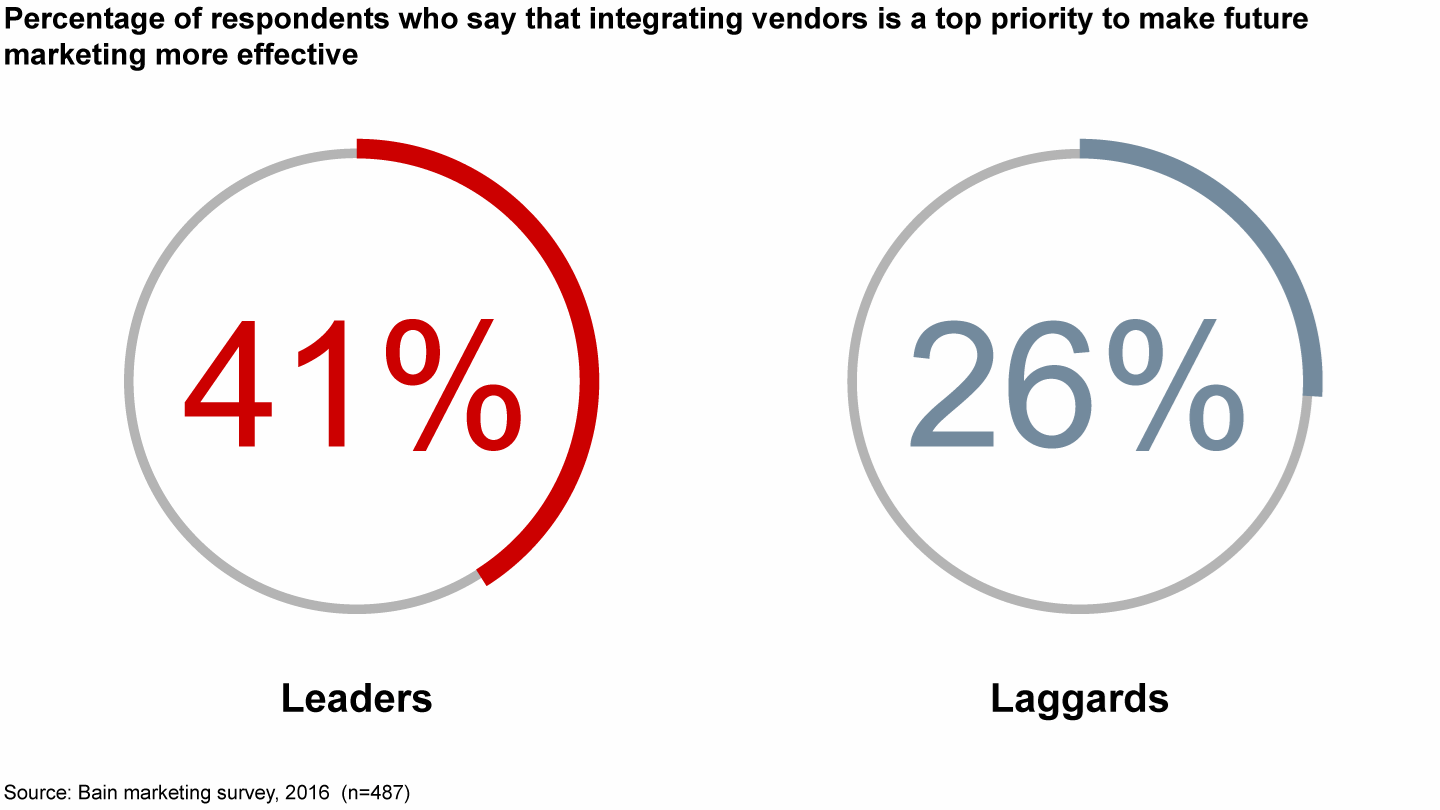
Commerce and life after Covid-19 will change, though exactly how is uncertain. We could well see more remote work, more e-commerce, less travel, the rise of alternative media formats and more contactless payment. We may also see surprising spikes in demand for certain banking, insurance and investment products.
This degree of change puts a premium on fast decision making for marketing. An Agile team closely aligned with the right partners can use continual testing to get closer to consumers as their priorities evolve.

Coronavirus
The global Covid-19 pandemic has extracted a terrible human toll and spurred sweeping changes in the world economy. Across industries, executives have begun reassessing their strategies and repositioning their companies to thrive now and in the world beyond coronavirus.